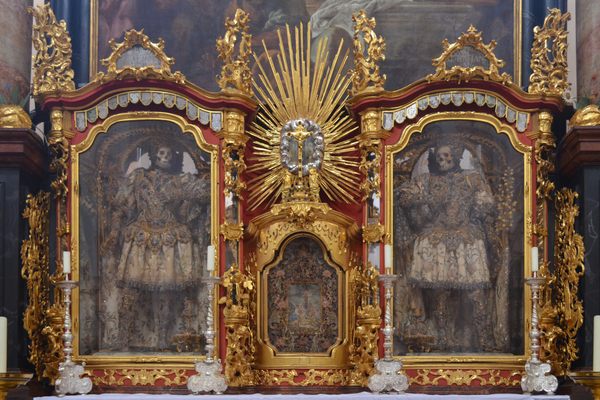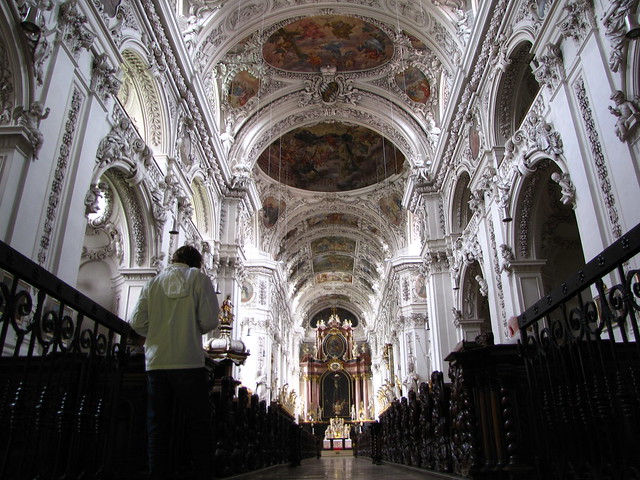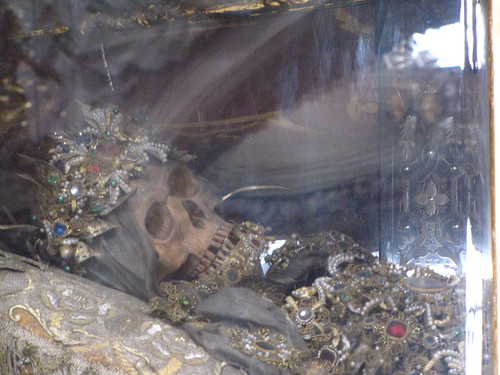First-hand: The Skeletons of Waldsassen Basilica
Stepping into the Baroque chapel of the Waldsassen Basilica, we were greeted by the most stylish skeletons we’d ever laid eyes on.
We shuffled along the perimeter of the chapel practically alone. There was a spattering of tourists and a handful worshipers, likely pilgrims, praying to the “savior without arms,” a famous statue of an arm-less Christ that is seen as a symbol of forgiveness and reconciliation.
With limited chances to stop and see places featured in Atlas Obscura after we left London on the 2010 Mongol Rally, all of us in Steppe On It!’s Nissan Micra agreed that the Waldsassen Basilica was the oddest place we could visit along the way.
Located in an unassuming German town, not far from the Czech border, in the lush Bavarian highlands, the Basilica is unique among Baroque churches due to its not-so-savory permanent residents.
Exhumed from the catacombs of Rome between 1688 and 1765, the Holy Bodies are dressed from head to toe in fanciful 18th century garb.
It is thought that a resident monk, obviously with a keen sense of style, adorned the fortunate souls in hand-made outfits fit for a king.
Displayed in luxurious glass cases, set inside nooks lining the perimeter of the Basilica, the skeletons exude an aura of satisfaction with their final resting place. Posing for curious onlookers, the ornamental remains stand and lounge in perpetuity, dressed in armor made of jewels, pearls and gold… Only the finest for the hereafter!

More fascinating information on the history of the Waldsassen Basilica’s residents over at its official entry in the Atlas!










Follow us on Twitter to get the latest on the world's hidden wonders.
Like us on Facebook to get the latest on the world's hidden wonders.
Follow us on Twitter Like us on Facebook